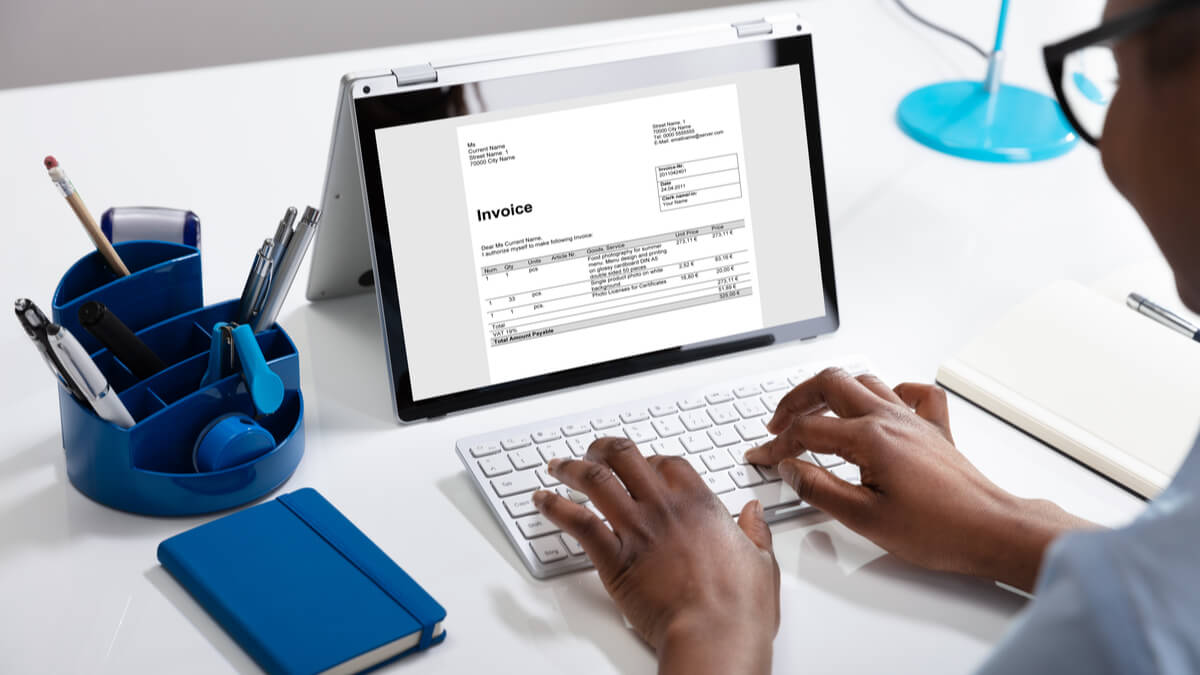Introduction
Invoices have long been the backbone of business transactions, serving as official requests for payment between buyers and sellers. Before the rise of digital payment gateways, cloud billing systems, and automated invoicing software, the traditional method of invoicing dominated the commercial landscape. It involved manual processes, physical documentation, and significant administrative effort. Despite modern technological innovations, the traditional invoicing method is still relevant in certain sectors due to its familiarity, legal recognition, and tangible record-keeping benefits.
This comprehensive guide explores the traditional method of using invoices for payment — its historical roots, structure, process, advantages, challenges, and modern adaptations. We will also discuss its relevance in today’s digital era and offer insights for businesses still relying on this age-old system.
The Origin and Evolution of Invoicing
Invoicing dates back thousands of years. Historical evidence shows that ancient Mesopotamians used clay tablets to document trade transactions and debts. Over time, these records evolved from handwritten parchments in medieval marketplaces to printed documents during the Industrial Revolution.
The invention of the printing press and later the typewriter significantly advanced the invoicing process. Businesses in the 19th and 20th centuries started using pre-printed invoice forms, which were filled out by hand or typewriter, stamped, and physically mailed to clients or customers. This practice became the norm and remained widely used until the digital age introduced faster, more automated alternatives.
Structure of a Traditional Invoice
A traditional invoice typically contains the following essential elements:
1. Header and Company Details
- Company name and logo (if applicable)
- Company address and contact details
- Invoice number
- Date of issue
2. Customer Information
- Customer name or company
- Billing address
- Contact details
3. Itemized List of Products/Services
- Description of each product/service
- Quantity
- Unit price
- Subtotals for each line item
4. Taxes and Discounts
- Applicable taxes (e.g., VAT, GST)
- Discounts (if offered)
- Total amount due
5. Payment Terms and Instructions
- Payment due date
- Accepted methods of payment (e.g., check, bank transfer)
- Late fee policies
- Notes or special instructions
The invoice is usually signed or stamped to confirm authenticity, especially in formal or international transactions.
The Traditional Invoicing Process
The traditional invoicing process typically unfolds in the following steps:
1. Service/Product Delivery
Once the product is delivered or the service is completed, the seller prepares the invoice.
2. Invoice Generation
Invoices are manually created using pre-printed templates or handwritten on an invoice pad. Some businesses may use spreadsheet software like Microsoft Excel or Word documents to generate and print the invoice.
3. Physical Delivery
The invoice is delivered to the customer via post, courier, or hand delivery. In some cases, it is faxed.
4. Payment Processing
The buyer processes the invoice internally, usually through their accounts payable department. They issue payment using traditional methods such as:
- Checks
- Bank drafts
- Wire transfers
5. Reconciliation
The seller receives payment, updates their ledger, and marks the invoice as paid. They may issue a receipt or a payment confirmation.
Types of Traditional Invoices
1. Pro Forma Invoice
A preliminary bill of sale sent to buyers before delivery. It is not a demand for payment but an estimate.
2. Commercial Invoice
Used in international trade, detailing the transaction for customs declaration.
3. Sales Invoice
Issued after a sale has occurred, used for payment collection.
4. Credit Invoice
Issued for refunds or discounts, showing a negative amount to reduce the total payable.
5. Timesheet Invoice
Used by service professionals billing for hours worked.
Advantages of Traditional Invoicing
Despite the growth of digital tools, traditional invoicing offers unique benefits:
1. Tangible Documentation
Hard copies can serve as physical proof of a transaction, especially useful in legal disputes or audits.
2. Simplicity
It doesn’t require high-tech infrastructure or internet access. Ideal for small businesses in rural or remote areas.
3. Legal Acceptance
In many jurisdictions, physical invoices are legally recognized and often required for certain regulatory processes.
4. Trust Factor
Some clients prefer paper invoices due to their perceived formality and professionalism.
5. Customizable and Personal
Handwritten or signed invoices often feel more personal, which can enhance customer relationships.
Disadvantages of Traditional Invoicing
While useful, the traditional invoicing method also poses numerous challenges:
1. Time-Consuming
Manual preparation, delivery, and follow-up are labor-intensive.
2. High Risk of Human Error
Mistakes in calculations or data entry can lead to disputes or delays.
3. Delayed Payments
Physical mailing increases the time between invoice issuance and payment receipt.
4. Storage Issues
Storing physical invoices takes up space and can lead to lost or damaged records.
5. Limited Scalability
Managing a growing number of transactions becomes cumbersome without automation.
Use Cases Where Traditional Invoicing Still Thrives
Despite technological advancements, traditional invoicing is still favored in specific contexts:
1. Rural and Underserved Areas
Where digital infrastructure is lacking, paper invoices remain the norm.
2. Freelancers and Micro-Businesses
Small operations often prefer handwritten invoices due to ease and low cost.
3. Government and Legal Entities
Some government tenders or court proceedings require physical invoices for documentation.
4. Custom-Made or Bespoke Services
Tailored services often use traditional invoicing to reflect a personalized touch.
5. Retail and Local Markets
In many informal or cash-based economies, receipts and invoices are still created manually.
Best Practices for Traditional Invoicing
For businesses that still rely on traditional methods, the following practices can enhance efficiency:
1. Use Pre-Printed Templates
Standardizing templates helps reduce errors and maintain consistency.
2. Keep Duplicate Copies
Always retain a copy for records, preferably using carbonless paper or scanning for digital backups.
3. Track Invoice Numbers
Assign sequential numbers to track payments, aging invoices, and disputes.
4. Include All Details
Never omit critical information such as due dates, tax breakdowns, or contact numbers.
5. Regularly Reconcile Records
Manually reconcile invoice records with received payments to ensure accuracy.
6. Follow Up Promptly
Maintain communication with clients to follow up on unpaid invoices.
Traditional Invoicing vs. Modern Billing Systems
| Feature | Traditional Invoicing | Modern Billing Systems |
|---|---|---|
| Format | Paper-based | Digital/PDF/Web-based |
| Creation Method | Manual | Automated |
| Delivery | Postal or physical handover | Email, cloud sharing |
| Payment Methods | Check, cash, wire transfer | Credit card, online payments |
| Recordkeeping | Filing cabinets | Cloud storage, databases |
| Error Rate | Higher due to manual entry | Lower with automation |
| Processing Time | Longer | Instant or near-instant |
| Environment Impact | Higher (paper usage) | Lower (paperless) |
Transitioning From Traditional to Digital Invoicing
While some businesses still rely on traditional invoicing, many are considering a gradual transition. Here’s how:
1. Start with Hybrid Invoicing
Use both physical and digital methods during the transition period.
2. Invest in Invoicing Software
Platforms like QuickBooks, Zoho Invoice, or FreshBooks automate invoice generation and tracking.
3. Train Staff
Offer basic training to employees on using digital tools.
4. Digitize Records
Scan and archive old paper invoices for easier access and safety.
5. Educate Clients
Inform clients about the benefits of digital invoicing and offer options accordingly.
Security and Fraud Concerns
While traditional invoices can be secure due to their physical nature, they are not immune to fraud:
1. Forgery
Fraudsters may replicate invoices or stamps.
2. Lost or Misplaced Invoices
Lost documents can lead to confusion or unauthorized payments.
3. Tampering
Physical documents can be altered if not stored securely.
Security Tips:
- Use official letterheads and serial numbers.
- Keep sensitive documents in locked storage.
- Confirm details via phone or email before releasing payments.
Case Study: A Small Manufacturing Unit Using Traditional Invoices
A small textile manufacturer based in a rural region of India continues to use traditional invoicing due to limited access to stable internet. Here’s how they operate:
- Invoices are handwritten using pre-printed pads.
- Copies are made using carbon paper and stored in physical files.
- Payments are accepted via check or bank transfer.
- Monthly reconciliation is done manually by the accountant.
- Despite its limitations, this method suits their scale and infrastructure, keeping operations simple and cost-effective.
The Future of Traditional Invoicing
The world is shifting towards digitization, yet traditional invoicing isn’t disappearing entirely. It will likely evolve into hybrid models where physical invoices are supported by digital backups and electronic communication.
Some experts believe traditional methods may even see a revival in specific sectors that value physical documentation and face-to-face transactions. Additionally, compliance laws in various countries still require hard copies for audits, ensuring their continued relevance.
Conclusion
The traditional method of using invoices for payment has stood the test of time due to its simplicity, tangibility, and legal reliability. Though overshadowed by digital alternatives, it continues to play a vital role in many businesses across the world.
Whether you’re a local artisan, a small business owner in a remote area, or part of an industry bound by regulatory frameworks, understanding the nuances of traditional invoicing is essential. While embracing modern billing solutions is advantageous for growth and efficiency, honoring and refining traditional methods can ensure operational continuity and client satisfaction.
By recognizing the strengths and limitations of traditional invoicing, businesses can make informed decisions that blend legacy practices with forward-looking strategies — a balance that may prove essential in a diverse, evolving commercial landscape.







Leave a Reply